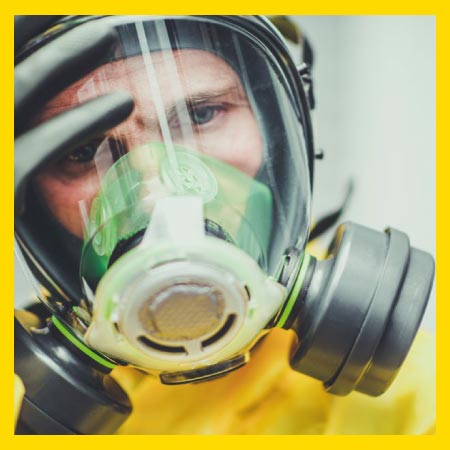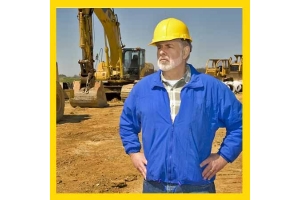Currency
June 07, 2022

While educational programmes focusing on the risks of workplace respiratory hazards have increased in recent years (British Occupational Hygiene Society’s (BOHS) ‘Breathe Freely’ campaign and the Institution of Occupational Safety and Health’s (IOSH) ‘No Time to Lose’ initiative), there is still much more that can be done.
This is emphasised by statistics from the Health and Safety Executive (HSE) who estimate each year that there are some 12,000 deaths in Great Britain from lung diseases linked to exposure to hazardous substances at work. In addition, a further 18,000 new cases of lung or breathing problems caused (or made worse by) airborne hazards in work environments will be reported over the same time period.
When considering these numbers, one must account for the fact that symptoms of occupational lung diseases can take several decades to present themselves, but even so, they show no signs of decreasing. The HSE says that the rate of self-reported, work-related lung or breathing problems has remained mostly consistent over the past ten years, with an estimated 130 cases per 100,000 workers.
Reducing these figures still requires significant efforts on the part of employers and employees themselves.
Harmful airborne hazards are numerous, and many are well known. Crystalline silica, for example, is a natural substance found in stone, bricks, concrete, rocks, gravel, clay and sand, and becomes airborne as a result of cutting, grinding and drilling these materials. The inhalation of Respirable Crystalline Silica (RCS) can cause a lung disease known as Silicosis, which is characterised by inflammation and scarring of the lungs.
Our understanding of hazards such as RCS is evolving constantly, and new research often reveals that standards and workplace exposure limits (WELs) previously deemed acceptable are, in fact, not conducive to good health. In February 2019, for instance, the HSE issued a safety bulletin about the change in enforcement expectations for the control of welding fumes, determining all weld fumes to be carcinogenic. This decision has had a significant impact on a wide variety of industries and, from my experience, has driven improved knowledge of workplace respiratory hazards within welding related industries – a welcome benefit.
Companies have a legal duty to limit the exposure of their employees to these hazards. Under the Health and Safety at Work etc. Act 1974 and the Management of Health and Safety at Work Regulations 1999, they are required to provide and maintain a safe working environment, so far as is reasonably practicable. Typically a ‘Hierarchy of Controls’ is considered when limiting exposure: Elimination, Substitution, Engineering, Administration and finally Personal Protective Equipment (PPE).
“RPE should always be considered the last line of defence once other control measures are implemented”
PPE (including Respiratory Protective Equipment, or RPE) should always be considered the last line of defence once the other control measures are considered and/or implemented. However, according to the HSE, an in-depth investigation of a small sample of companies “showed only around half were effective in protecting the wearer through their use of RPE as a control”, owing to a lack of understanding, knowledge and awareness. So, what are the common steps in providing effective respiratory protection?

In the first instance, companies must carry out risk assessments, firstly to identify any airborne hazards. Steps should then be taken to limit and reduce individuals’ exposure to airborne hazards. This is where consideration of the Hierarchy of Controls comes in. However, respiratory hazards will sometimes remain even after such measures have been taken. In these cases, employees may still require adequate RPE, which can reduce exposure to the hazards faced, to the level required to protect the wearer’s health.
To find adequate RPE, employers should first narrow down their options to include only those that can protect against the hazards identified in the initial risk assessment. Next, employers should whittle down their options further, to include only RPE that is also capable of protecting against the concentration of the hazard present in their workplace. Typically, RPE manufacturers can assist with this process by providing an overview of their products’ capabilities.
Not only should RPE be adequate, it should also be suitable for its intended use. Comfort is one of the main factors affecting rates of compliance. It is therefore important that during selection, individuals look for RPE incorporating features that maximise comfort such as soft materials in contact with the skin and easy opening exhalation valves that can efficiently vent hot and humid air exhaled by wearers.
Because all people are different and comfort is subjective, it is important that – once the RPE options have been narrowed down to those that can provide adequate protection – workers are involved in the final RPE selection process. Experience has indicated that if workers become involved in the selection decision and trial product options, they are more likely to comply with wearing RPE when it is required.
Common types of RPE for consideration may include filtering facepiece disposable respirators, reusable respirators and powered/supplied air systems. These options provide a variety of different features to suit the needs of the user and their working environment. In addition, manufacturers often design a range of products with the same levels of protection in a variety of shapes and sizes to accommodate a broad spectrum of facial features.
www.hsmemagazine.com/article/a-fitting-solution
This is emphasised by statistics from the Health and Safety Executive (HSE) who estimate each year that there are some 12,000 deaths in Great Britain from lung diseases linked to exposure to hazardous substances at work. In addition, a further 18,000 new cases of lung or breathing problems caused (or made worse by) airborne hazards in work environments will be reported over the same time period.
When considering these numbers, one must account for the fact that symptoms of occupational lung diseases can take several decades to present themselves, but even so, they show no signs of decreasing. The HSE says that the rate of self-reported, work-related lung or breathing problems has remained mostly consistent over the past ten years, with an estimated 130 cases per 100,000 workers.
Reducing these figures still requires significant efforts on the part of employers and employees themselves.
Seeing the Hazard
Harmful airborne hazards are numerous, and many are well known. Crystalline silica, for example, is a natural substance found in stone, bricks, concrete, rocks, gravel, clay and sand, and becomes airborne as a result of cutting, grinding and drilling these materials. The inhalation of Respirable Crystalline Silica (RCS) can cause a lung disease known as Silicosis, which is characterised by inflammation and scarring of the lungs.
Our understanding of hazards such as RCS is evolving constantly, and new research often reveals that standards and workplace exposure limits (WELs) previously deemed acceptable are, in fact, not conducive to good health. In February 2019, for instance, the HSE issued a safety bulletin about the change in enforcement expectations for the control of welding fumes, determining all weld fumes to be carcinogenic. This decision has had a significant impact on a wide variety of industries and, from my experience, has driven improved knowledge of workplace respiratory hazards within welding related industries – a welcome benefit.
Companies have a legal duty to limit the exposure of their employees to these hazards. Under the Health and Safety at Work etc. Act 1974 and the Management of Health and Safety at Work Regulations 1999, they are required to provide and maintain a safe working environment, so far as is reasonably practicable. Typically a ‘Hierarchy of Controls’ is considered when limiting exposure: Elimination, Substitution, Engineering, Administration and finally Personal Protective Equipment (PPE).
“RPE should always be considered the last line of defence once other control measures are implemented”
PPE (including Respiratory Protective Equipment, or RPE) should always be considered the last line of defence once the other control measures are considered and/or implemented. However, according to the HSE, an in-depth investigation of a small sample of companies “showed only around half were effective in protecting the wearer through their use of RPE as a control”, owing to a lack of understanding, knowledge and awareness. So, what are the common steps in providing effective respiratory protection?

Assessing the Risks
In the first instance, companies must carry out risk assessments, firstly to identify any airborne hazards. Steps should then be taken to limit and reduce individuals’ exposure to airborne hazards. This is where consideration of the Hierarchy of Controls comes in. However, respiratory hazards will sometimes remain even after such measures have been taken. In these cases, employees may still require adequate RPE, which can reduce exposure to the hazards faced, to the level required to protect the wearer’s health.
Adequate RPE
To find adequate RPE, employers should first narrow down their options to include only those that can protect against the hazards identified in the initial risk assessment. Next, employers should whittle down their options further, to include only RPE that is also capable of protecting against the concentration of the hazard present in their workplace. Typically, RPE manufacturers can assist with this process by providing an overview of their products’ capabilities.
Suitable RPE and Wearer Diversity
Not only should RPE be adequate, it should also be suitable for its intended use. Comfort is one of the main factors affecting rates of compliance. It is therefore important that during selection, individuals look for RPE incorporating features that maximise comfort such as soft materials in contact with the skin and easy opening exhalation valves that can efficiently vent hot and humid air exhaled by wearers.
Because all people are different and comfort is subjective, it is important that – once the RPE options have been narrowed down to those that can provide adequate protection – workers are involved in the final RPE selection process. Experience has indicated that if workers become involved in the selection decision and trial product options, they are more likely to comply with wearing RPE when it is required.
Common types of RPE for consideration may include filtering facepiece disposable respirators, reusable respirators and powered/supplied air systems. These options provide a variety of different features to suit the needs of the user and their working environment. In addition, manufacturers often design a range of products with the same levels of protection in a variety of shapes and sizes to accommodate a broad spectrum of facial features.
SOURCE:
www.hsmemagazine.com/article/a-fitting-solution









